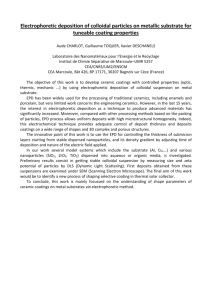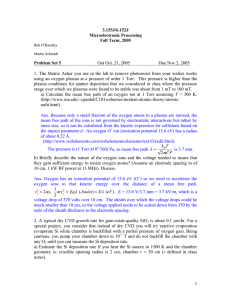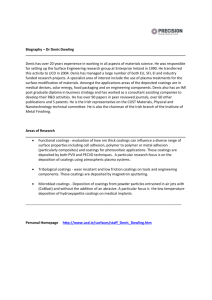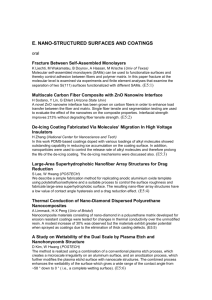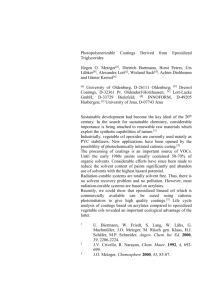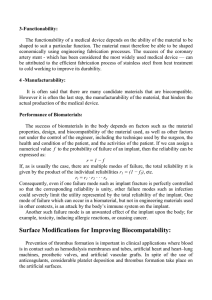CVD polymers for smart surface modification and device
advertisement
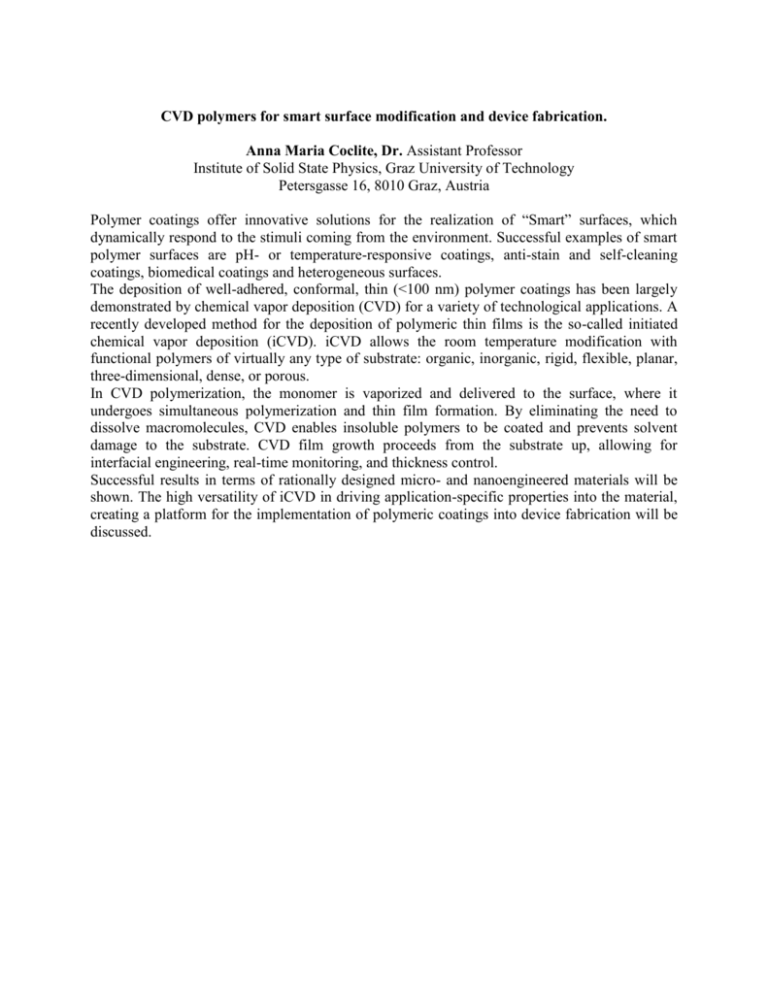
CVD polymers for smart surface modification and device fabrication. Anna Maria Coclite, Dr. Assistant Professor Institute of Solid State Physics, Graz University of Technology Petersgasse 16, 8010 Graz, Austria Polymer coatings offer innovative solutions for the realization of “Smart” surfaces, which dynamically respond to the stimuli coming from the environment. Successful examples of smart polymer surfaces are pH- or temperature-responsive coatings, anti-stain and self-cleaning coatings, biomedical coatings and heterogeneous surfaces. The deposition of well-adhered, conformal, thin (<100 nm) polymer coatings has been largely demonstrated by chemical vapor deposition (CVD) for a variety of technological applications. A recently developed method for the deposition of polymeric thin films is the so-called initiated chemical vapor deposition (iCVD). iCVD allows the room temperature modification with functional polymers of virtually any type of substrate: organic, inorganic, rigid, flexible, planar, three-dimensional, dense, or porous. In CVD polymerization, the monomer is vaporized and delivered to the surface, where it undergoes simultaneous polymerization and thin film formation. By eliminating the need to dissolve macromolecules, CVD enables insoluble polymers to be coated and prevents solvent damage to the substrate. CVD film growth proceeds from the substrate up, allowing for interfacial engineering, real-time monitoring, and thickness control. Successful results in terms of rationally designed micro- and nanoengineered materials will be shown. The high versatility of iCVD in driving application-specific properties into the material, creating a platform for the implementation of polymeric coatings into device fabrication will be discussed.
